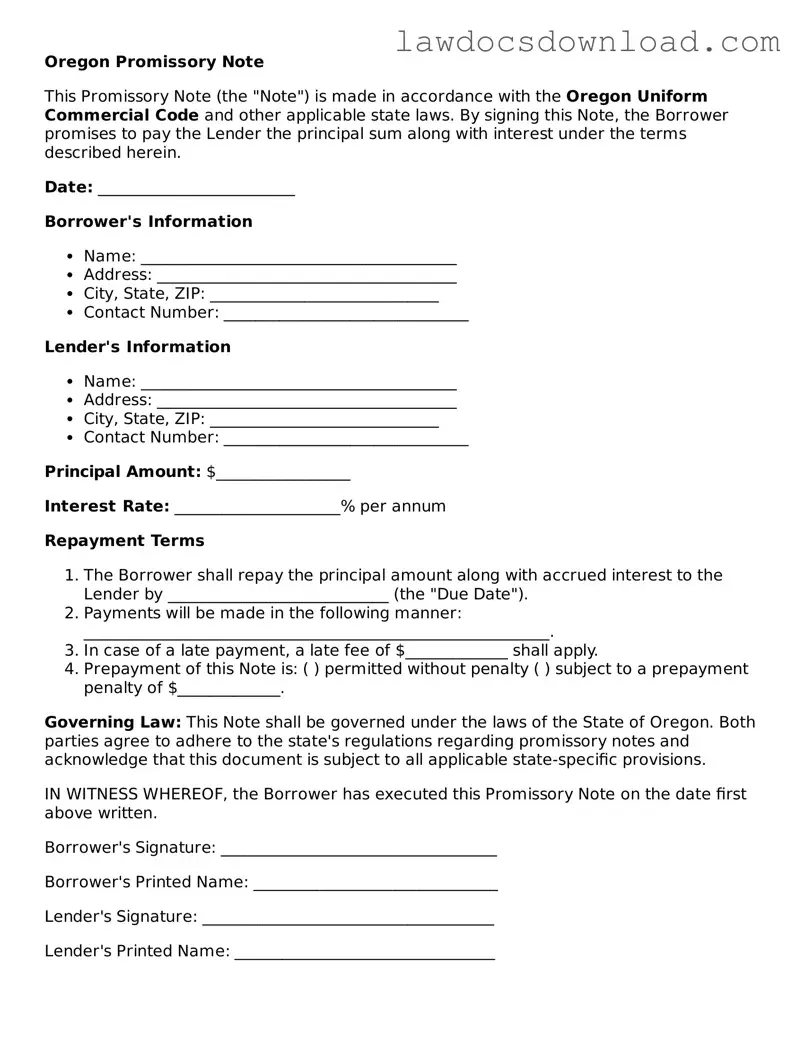Filling out a promissory note is akin to making a promise, one that's tinged not just with goodwill but also with legal obligations. In Oregon, as in elsewhere, this document, when not approached with the due diligence it demands, can become a minefield of potential mistakes. It's these errors that can turn a straightforward agreement into a complex, contentious dispute. This context sets the stage for exploring the most common mistakes individuals make when filling out the Oregon Promissory Note form.
One prevalent error is the failure to specify the terms of repayment in clear, unambiguous language. Many assume a verbal agreement or a basic understanding suffices. Yet, without explicit terms detailing the amount of each payment, the frequency of payments, and the duration of the repayment period, ambiguity can lead to disagreements, or worse, legal disputes.
Another mistake lies in the omission of interest rates or incorrect calculation thereof. Oregon law permits promissory notes to include interest, but the rate must be clearly stated and not exceed legal limits. Failure to do so, or miscalculating, can not only nullify the agreed-upon interest but also potentially subject the lender to legal penalties for usury.
The lack of a late payment policy is yet another oversight. A comprehensive promissory note should outline what constitutes a late payment and the consequences thereof, including any additional fees. Without this, enforcing timeliness becomes a challenge, and collecting late fees not previously agreed upon in writing becomes nearly impossible.
People often overlook the necessity of securing the note. While not all promissory notes are secured, when an agreement involves collateral, failing to properly describe the security interest can render the collateral clause unenforceable, putting the lender at risk in case of default.
Another critical mistake is not considering state-specific legal requirements. Oregon law has particular stipulations regarding promissory notes that, if not adhered to, could invalidate the document. This oversight could range from missing witness signatures to not adhering to specific disclosures required by state laws.
A significant yet common error occurs when parties sign without witnesses or proper notarization, if required. While not all promissory notes require notarization, disregarding this step when it is, indeed, necessary can affect the document's enforceability in court.
Many individuals also fail to keep a record of payments made or received. This administrative oversight can lead to disputes about the remaining balance, interest accrued, and could complicate matters should the note have to be presented in legal proceedings.
The final, often overlooked mistake is not updating the note to reflect changes in terms. Circumstances change, and the terms of a promissory note might need to be updated. However, without formal amendments, any informal agreements or understandings regarding modifications will not hold legal water, potentially leaving both parties in a precarious position.
Understanding and avoiding these mistakes when filling out an Oregon Promissory Note form can ensure that what is intended as a straightforward financial agreement remains just that, minimizing potential conflicts and legal hurdles down the road.
